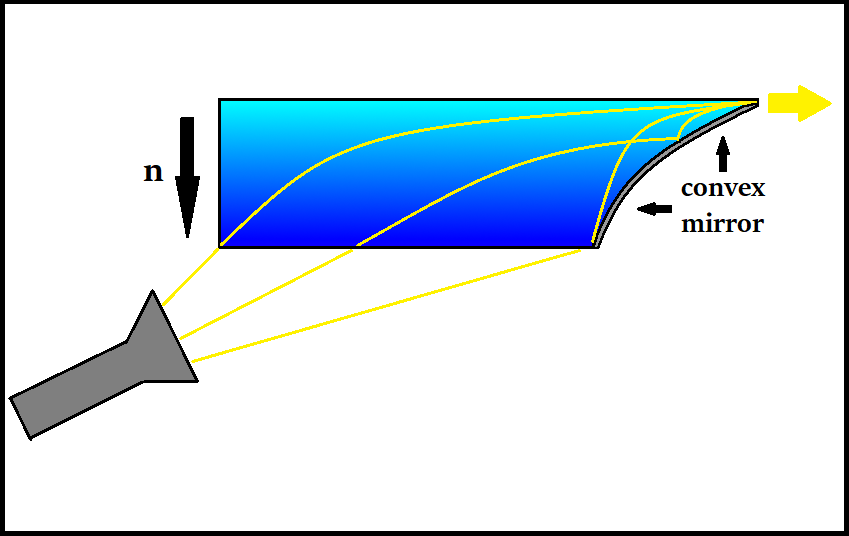Another decades-old invention of mine, which I'm surprised no one else stumbled upon over these past few years. It is a Gradient Refractive Index LASER, which can concentrate a wide area light source into a single, small and powerful beam of light.
The material used can be any glass with a refractive index that gradually changes laterally. As the beam passes through the material, it is contorted until it travels horizontally in a diffuse yet uniform manner. Near the end of its journey through the glass each segment of the beam strikes a parobolically convex mirror which has been mathematically fashioned to redirect it at the proper angle to exit the material traveling horizontally as a single beam of light.
The reason why the refractive index must be a gradient is to prevent reflection of the light source when it strikes the material's surface. Also, the ideal glass would be minimally absorbant of light, so that it would not become overheated by repeated use.
The calculations proving that this device can exist are buried somewhere secret. As I cannot find them, I doubt anyone else can either, but the proof does involve mostly Physics along with a bit of Calculus.

Add new comment